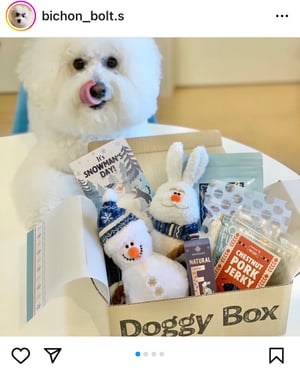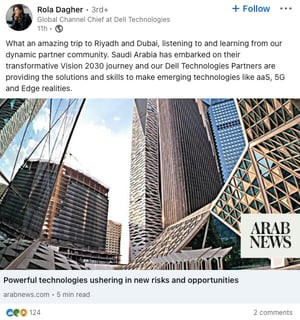Guide
Influencer Marketing vs. Brand Ambassadors
Take a deep dive into these two types of collaborations to learn what's the difference and why this matters
Marketers tend to throw around a lot of terminology. With each new trend comes a new set of terms, and if you’re not up to date with what means what, you could be left feeling like everyone is part of a club that you don’t have membership to.
Case in point: Influencer Marketing vs. Brand Ambassadorships. If both terms involve leveraging someone’s loyal audience to create brand awareness and generate sales, then surely they must be synonyms, right? While there is some overlap between these 2 types of collaborations, there are also some key differences that you should know. Keep reading as we break down what each of these terms mean, the key differences, and when to use each one in your influencer marketing strategy.
Influencers vs. Brand Ambassadors: What’s the Difference?
Both types of advertising revolve around harnessing the power of recommendations. To do this, brands collaborate with a content creator who is deemed to have a certain knowledge of a topic and therefore some sway over the purchase decisions of their followers.
In an age where tolerance for intrusive advertising is at an all time low, working with a content creator is a way to get the attention of your target audience without getting on their nerves. While almost 50% of users between the ages of 25 and 34 use a desktop ad blocker to avoid unwanted popups, these same users would watch and maybe even enjoy a creative reel of a real person introducing a product in a new and exciting way.
Benefits of influencer marketing and brand ambassadors include:
- Consumer confidence, as creators have already built trust with their audience which they can pass on to your brand by association.
- Improved brand awareness, as your products reach new audiences and people are encouraged to find out what you’re all about.
- The creation of new and fresh content, which you can repost to your company’s social media page, creating a stream of valuable user-generated content.
- Accessibility, as smaller, more niche, creators often have lower price tags or are willing to work for free products and perks.
- Higher SEO ratings due to more organic traffic to your webpage from quality sources (i.e., links from sponsored posts).
However, while the premise is similar, brand ambassadors differ from influencers in the following ways:
- Duration: brand ambassadorships are generally long-term, while influencers are often contracted for one-off collaborations.
- Buy-in: while influencers can be hired to promote a product they haven’t heard of before, brand ambassadors tend to be celebrities, loyal customers, or employees who already know and love your products and promote them along various marketing touch points.
- Exclusivity: ambassadors are likely to limit their collaborations to a short list of companies, whereas influencers may work with your competitors if it is within their niche.
- The prioritization of brand voice and expertise over reach: while some brand ambassadors do have very large audiences, many are niche profiles with loyal followers and unquestionable expertise in their field.
- Product testing and feedback: brand ambassadors are subject-matter experts, and therefore can offer valuable feedback on your products. In this way, collaborations offer a double value: ambassadors share information about your products and services and then inform your brand about the needs and preferences of their target audience.
- Retainer rates: like many specialized professionals, brand ambassadors are sometimes paid a retainer that enables a brand to access their expertise or services on demand.
Now that we’ve gone over the basics, let’s dive into each term to explore what makes each type of collaboration unique, the pros and cons of each, and how to implement them.

Influencer Marketing: Increased Variety & Reach
Influencer marketing is no longer a novelty and is now a familiar term for most marketers. What was once a luxury reserved for famous brands with big budgets is now a $16.4 billion industry used by companies large and small.
The power of this authentic marketing strategy has been well documented. On average, the ROI (Return on Investment) of influencer marketing is 11x greater than other types of digital marketing, such as banner ads and pop ups. The growth of this market has motivated users of all ages to hop on the content creation bandwagon, and as such, we’ve seen a huge diversification in the types and sizes of influencer profiles.
It’s this rich diversity that leads us into the main benefits of marketing with an influencer.
What Are the Benefits of Influencer Marketing?
When compared to brand ambassadors, influencers offer these distinct advantages:
- More variety: an influencer is any content creator with +1000 followers, giving you a huge pool to choose from. And these creators don’t even have to be human; in fact, virtual content creators are on the rise and 45% of marketers polled reported that they would consider hiring a virtual influencer to promote a product or attend their events.
- Broader appeal: many brand ambassadors are quite niche, meaning their content will mainly appeal to those who share the same interests. By choosing an influencer with a broader appeal, you can ensure that none of your target audience is excluded from your marketing efforts.
- Increased reach: the broader appeal of many influencer profiles means your content is seen by more people.
- Marketing experience: for many influencers, creating dynamic, attractive content is a full-time job. As such, they are experts in presenting your product in a way that’s not salesy.
What Are the Drawbacks of Influencer Marketing?
Of course, this type of collaboration is not without its drawbacks. Mainly, the short duration of influencer contracts. While it may generate a lot of buzz, a one-off collaboration with a famous influencer may not generate the long-term engagement you desire.
When you limit a collaboration to just one post or campaign, you stem the creative flow which is one of the best perks of marketing with influencers. Changing from influencer to influencer may also prevent you from having a cohesive brand voice.
How Do I Find An Influencer Who Fits My Brand?
Get your campaign started by following these simple steps:
- Determine what you’re looking for and what KPIs you’ll measure to determine success. At this stage in your marketing strategy, are you more concerned with brand awareness or company voice and culture? While macro-influencers are great for getting your name out there, they are often expensive in the long term and generate less engagement than smaller, more niche profiles.
- Choose the social networks where you wish to advertise and research the hashtags that are most relevant to your product. Perform manual searches to find profiles that match your aesthetic or use an influencer marketing platform to set filters and narrow down your pool.
- Once you have a list of possible candidates, make sure their performance is up to scratch. You can do this by reaching out and starting a conversation or by using an analytics tool that gives you insight into influencer engagement, earned media value, follower quality, and more.
- Finally, make an offer. You should have a good idea of what you want your influencer to do and why you’ve chosen them when you do this. Remember, influencers are business people just like you, so they’ll want to know what value you can offer them in return for their services.

Brand Ambassadors: Community & Expertise
At its core, a brand ambassadorship is taking someone who already loves your products or services and featuring them in marketing along multiple consumer touch points. This could be anyone – a celebrity, loyal customer, or even a star employee – who promotes your brand on a long-term basis.
The main difference from influencer marketing is its duration. While influencers may be contracted on a one-off basis, brand ambassadorships are usually long term and more collaborative. So what does this look like? This is best illustrated with examples. Here are some of our favorites:

Dell
If you follow the Influencity blog, then you probably already know that we’re fans of Dell’s brand ambassador strategy. It works because they harness the power of the people who know their company best: their own employees. To achieve this, Dell offered brand and social media certifications to all its employees and included +1,200 employees in the Dell Champions Network.
These subject-matter experts then promote the brand through social media, helping Dell reach a huge audience. The beauty is that this strategy not only helps raise brand awareness, but it also helps attract top talent. That’s right, Dell uses employee ambassadors to promote their products and attract the professionals who will help them grow and innovate.

Patagonia
Did you know that Patagonia has had an active brand ambassador program since 2000? If you didn’t, then you’re not alone. This is because Patagonia has never made advertising a priority. While the outdoor sportswear company does use niche celebrities to appeal to audiences through shared passions and authentic recommendations, this is not the main role of Patagonia brand ambassadors. These ambassadors are outdoor enthusiasts chosen for their talent and expertise in areas such as climbing, skiing, and trail running and not only help with brand awareness but with product development and testing as well.
It’s really the best of all worlds for Patagonia. Ambassador expertise ensures that they’re knowledgeable about the products and therefore able to promote them to their niche audiences. In addition, genuine feedback from professionals in the field ensures that the brand is responsive and able to offer the best possible products.

Red Bull
If you’ve been anywhere near a college campus on a sunny spring day, you’ve probably seen them: the Red Bull Marketeers sporting the can-shaped backpacks and offering free samples. By enlisting students, Red Bull directly reaches younger audiences in a fun and authentic way. Again, the benefit of this collaboration is mutual: students are empowered to develop and deliver tailor-made marketing programs while Red Bull benefits from their commitment and in-depth local knowledge.

Nike Air Jordans
Michael Jordan became the world’s first brand ambassador when he signed a $500,000 annual deal with the sportswear company Nike in 1985. What started as an improbable relationship (Jordan was originally interested in a collaboration with Addidas – his preferred footwear brand) turned into one of the most successful brand ambassadorships in history. The key was the brand’s willingness to work with their ambassador, proposing that Jordan create his own signature shoe line, which quickly became the best selling shoes in history.
What Are the Benefits of a Brand Ambassador Program?
The benefits of a brand ambassador come down to two things: commitment and expertise.
While short-term influencer partnerships can offer fresh faces and perspectives for your campaigns, the actual process of searching for, vetting, and arriving at an understanding (negotiating contracts, communicating expectations) with an influencer can be time and resource intensive.
In addition, if your strategy doesn’t include sufficient Influencer Relationship Management (think of the famous CRM and apply it to your influencers), your relationship with content creators could fizzle out. Even worse, if you don’t negotiate any type of exclusivity with your influencer they could end up accepting deals from your competitors to market their products along with yours.
If you think we’ve painted a dire picture above, then a brand ambassadorship could be for you. This type of collaboration is characterized by an ambassador’s commitment to a brand and the long-term duration of these relationships.
So, how do you go about finding an ambassador with a commitment to your product or service? This leads us to the second main benefit: expertise. Brand ambassadors know your product because they’ve personally used it to address their pain points in the past. This includes celebrities, such as professional athletes who use your product on the field, loyal customers who swear by your brand, or even employees who know the ins and outs of the sector. As these consumers have experience using your product, they know how to market it and likely have followers who are ready and willing to listen.
What Are the Drawbacks of Brand Ambassadorship?
Like with influencers, working with Brand Ambassadors does come with its drawbacks. Although ambassadors love your products, it may take time to foster a relationship with them as a person. This type of creator will want to feel like they are part of a community, and to do this well you’ll have to put in some effort.
In addition, while potential ambassadors may be experts in their field, this doesn’t guarantee that they’ll know how to market your products. To ensure that your program is a success, look for ambassadors who are able to connect with their audience and are free from scandals that might negatively impact your marketing efforts.
How Do I Find A Brand Ambassador Who Fits My Brand?
- Like with influencers, you’ll want to begin this process by establishing your goals. How regularly do you want to work with your ambassador? How much social media marketing experience do they need?
- Start your search closer to home. Are any of your current customers content creators? Perhaps some of them have a large audience that they could leverage in your favor. Do any of your employees have the potential to promote your company at scale?
- If you’re looking to work with multiple creators, you may even want to dedicate a page on your website to brand ambassadorships. This way, the creators who come to you know exactly what you’re expecting and how to apply.
- If you’ve worked with influencers in the past, try to grow this relationship into a full ambassadorship. To do so, make sure your IRM (Influencer Relationship Management) skills are up to par. If you’re afraid of overlooking some of the small things, technology can help – these days IRM tools are an essential part of any influencer marketing software suite.
- Don’t forget that a brand ambassadorship is a two-way street. If these creators are going to promote your products as experts, make sure you’re responsive to their needs. Once you’ve established a relationship, include them in product testing and development. Feeling like they are a valued member of your team will increase their buy-in and make your collaboration that much richer.
Browse our blog posts, eBooks, and more
eBook
Influencer Outreach Guide: How to Connect, Negotiate and Set Clear Campaign Goals
Download now
Blog Post
How to Market Your Business on Social Media: 10 Tips that Can Help You Sell More
Read more
eBook
Influencer Marketing: The Ultimate Guide to Campaign Planning, Execution, and ROI
Download nowNo results found.

